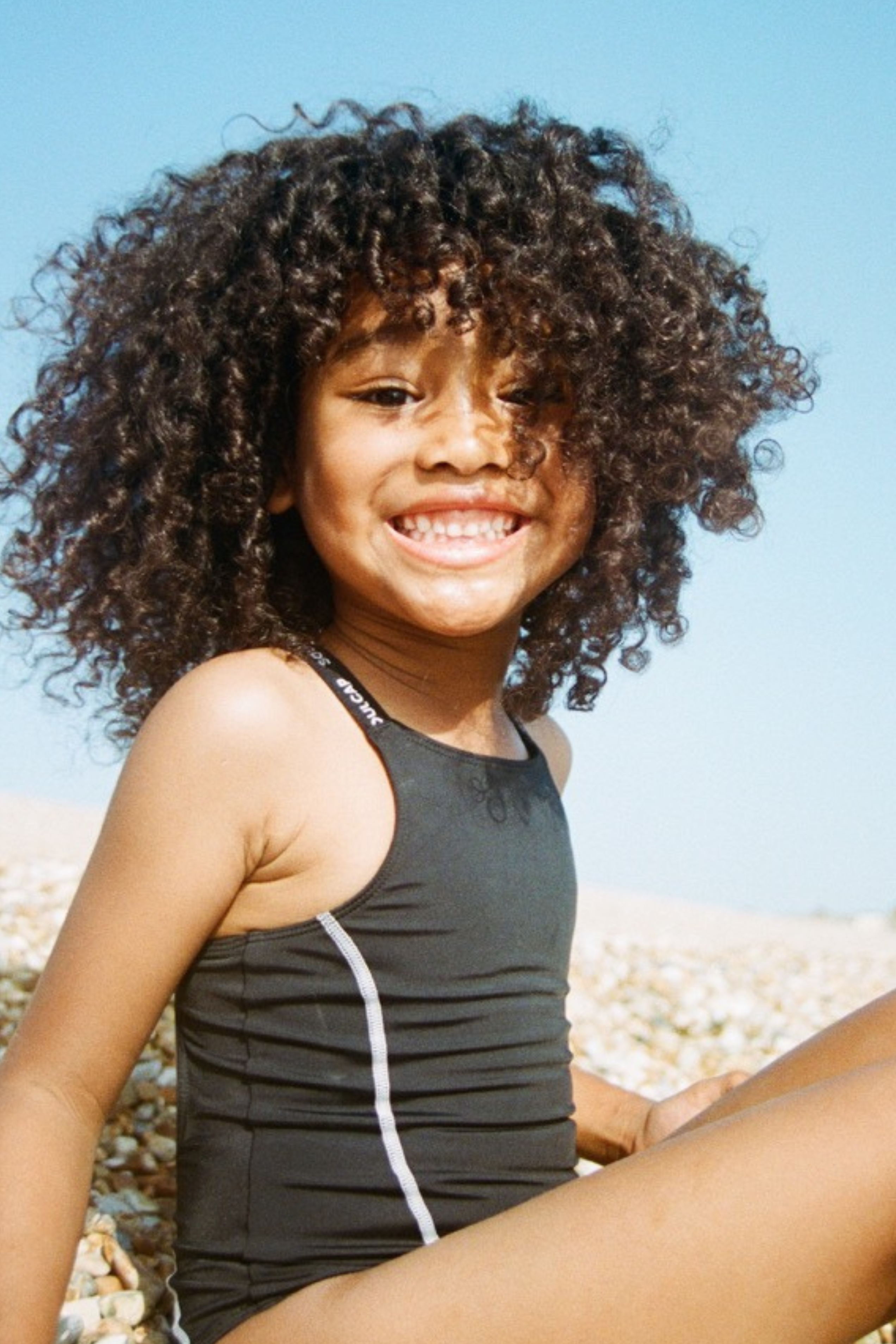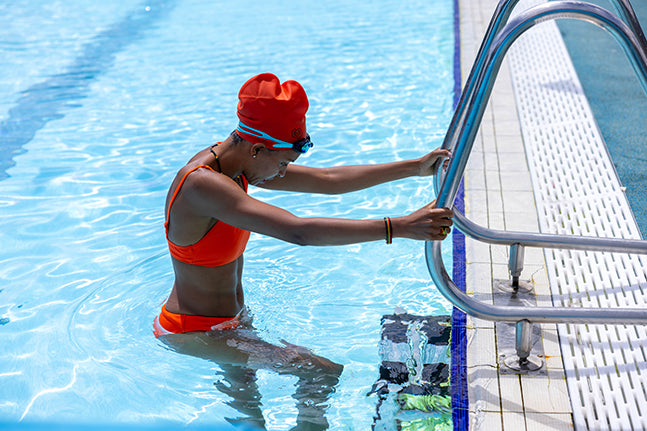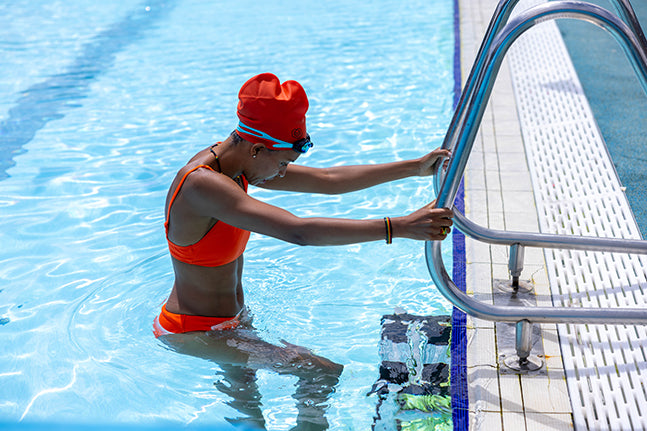Statistics from Swim England show that 1 in 3 adults in England can’t swim.
That’s a shocking statistic, with over 14 million people who aren’t comfortable in the water. And when you think about swimming as a life-saving skill, that statistic only gets more worrying.
But for every adult out there who hasn’t learned to swim, there’s hope:
Because it’s never too late to learn.
We’ve met countless adult swimmers who didn’t learn until later in life — and our own SOUL CAP co-founders were once in exactly the same boat.
So if you’re an adult beginner who’s planning to learn this life-saving skill, we’ve got some tips to help you prepare.
Here’s what you can do to make the whole process easier:
Remember why you’re learning
Learning to swim isn’t a sprint — it’s a slow and steady marathon that takes weeks and months to feel capable and competent.
You need to be able to keep up the same motivation and energy you start with — and that means keeping your focus on the reasons why you’re learning.
Luckily for you, there are plenty of them to choose from. If you’re an adult learning to swim, that could mean focusing on:
- The importance of learning a life-saving skill
- The rewards of progression and getting better at a new sport
- The improvements to your health, your fitness, and your confidence
- Being a part of the water-based activities your friends and family already enjoy
- Feeling included on holidays and trips to the beach
- Learning a valuable skill you can pass on to your kids
- And the pride of overcoming something that was once one of your fears.
We could keep going — but you get the idea!
There are so many good reasons to make swimming a part of your life, no matter what age or stage you’re at. And with a focus on your goals, it becomes easier to find the motivation (and the courage) to keep moving forward and see real results.
Get comfortable before you start
Learning as an adult isn’t as easy as it is for kids. There’s a sense of carefree courage that comes with being young, where kids can dive into new things without overthinking it.
But for an adult learning to swim, it helps to take things slow — and there’s plenty you can do to make yourself more comfortable before you take your first dip in the pool.
Before your first swim lessons, you could try:
- Actively practising your breathing control — while you’re on a run, riding a bike, or just moving around the house
- Submerging your face in the bath or a sink — get used to the feeling of holding your breath and breathing out slowly while underwater
- Experimenting with flotation — each time you’re in the bath, try to float your body a few inches up from the bath floor (and notice how breathing in and out affects how you float).
The more time you spend in water, the more relaxed you’ll be when you hit the pool. But it’s also about how you feel on the day — feeling confident and comfortable in a new environment.
So if you’re getting prepared for your first lesson, you’ll need the right swimwear for your body type — so you can look good, feel good, and give your full focus to your swim.
Choose the right protection
Compared to some other sports, swimming doesn’t take much of a toll on your body. But you can expect some wear and tear — and having the right equipment can help to reduce the effects of being in the water.
(And if you’re feeling a bit of stress and trepidation about swimming, getting prepared with protective gear can help to soothe an anxious mind — which is always a welcome bonus!)
We’ve talked before about the effects of water and chlorine on your hair, and how a swim cap that fits all hair types can help to keep your hair healthy and dry when you swim.
But it’s also not great for your ears, with the potential for ear infections if you don’t protect yourself. So if you want to stay safe and reduce your risk, you can find a reliable set of ear plugs designed for swimmers to help keep the water at bay.
(And of course, we’d always recommend a quality pair of swim goggles for anyone who’s new to swimming, regardless of their age. You’ll be more comfortable in the water, more aware of your surroundings — and you’ll be able to enjoy the view underwater with crystal-clear clarity.)
Don’t expect too much at the start
If you’re coming in cold with no experience in the water, your first lesson might be a lot slower than you want it to be.
And that’s perfectly normal — it’s a slow and steady progression that always takes time.
You probably won’t be doing full laps on your first day, and you might not even learn a complete stroke. What’s important is that you start to get comfortable and confident being in the water, and you get used to how you move and float, and how you control your breathing and movement.
If it’s your first time in the pool and you’re not taking a formal lesson, one of the best tools you can bring is a buoyant training aid.
With a kickboard and a pullbuoy to make floating easier, you can rest either your arms or legs while you focus on mastering the basics — the separate armstrokes and kicking patterns that you can later put together to form a complete swimming stroke.
(And for the nervous learners among you, they’re a fantastic support tool to give you that extra confidence as you learn to safely float and move around the water.)
Ready to start a brand-new journey?
Whether you’re a fresh new learner or you’re coming back to the water after a break, taking that first step is a huge accomplishment that deserves the biggest respect.
And if you’re serious about achieving your goals, you’ll need the right tools for the job to stay safe, comfortable, and confident in the pool.
Check out our full range of inclusive swim caps and swimwear — or take a look at our training aids and swim accessories to help you on your way.


